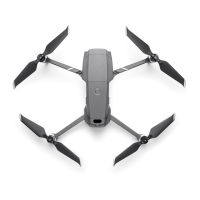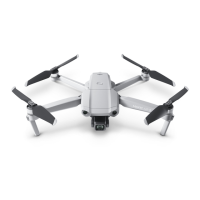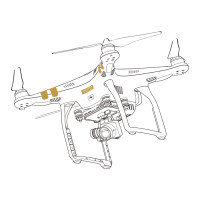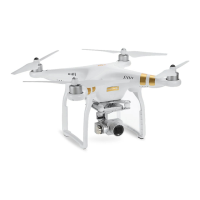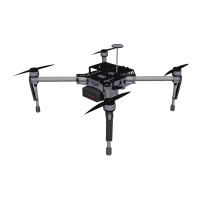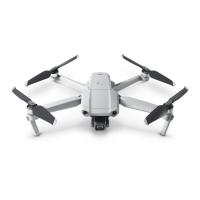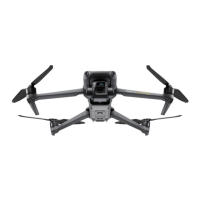DJI Mavic 3 User Manual
18
©
2021 DJI All Rights Reserved.
and ight speed. A warning prompt will appear in DJI Fly when the battery level is low and the aircraft
can only support Low Battery RTH.
The user can cancel RTH by pressing the RTH button on the remote controller. If RTH is cancelled
following a low battery level warning, the Intelligent Flight Battery may not have enough power for the
aircraft to land safely, which may lead to the aircraft crashing or being lost.
The aircraft will land automatically if the current battery level can only support the aircraft long enough
to descend from its current altitude. Auto landing cannot be canceled but the remote controller can be
used to alter the direction and the speed of descent of the aircraft during landing. The throttle stick can
be used to increase the ascent speed by 1 m/s if there is sucient power. The throttle stick cannot be
used to increase the ascent speed and the aircraft will land if there is no power left.
During auto landing, nd an appropriate place to land the aircraft as soon as possible. The aircraft will
fall if there is no power remaining.
Failsafe RTH
If the Home Point was successfully recorded and the compass is functioning normally, Failsafe RTH
automatically activates after the remote controller signal is lost for more than six seconds. Note that the
action the aircraft performs when the remote controller is lost must be set to Return to Home in DJI Fly.
When the lighting is sufficient and the vision systems are working normally, DJI Fly will display the
RTH path that was generated by the aircraft before the remote controller signal was lost. The aircraft
will return to the Home Point on the best possible path according to the environment. The aircraft will
remain in RTH even if the remote controller signal is restored.
When the lighting is not sucient and the vision systems are not available, the aircraft will enter Original
Route RTH.
Original Route RTH Procedure:
1. The aircraft brakes and hover in place.
2. a. If the aircraft is farther than 50 m from the Home Point, the aircraft adjust its orientation and ies
backwards for 50 m on its original ight route before entering Straight Line RTH.
b. If the aircraft is farther than 5 m but less than 50 m from the Home Point, it enters Straight Line RTH.
c. The aircraft lands immediately if it is less than 5 m from the Home Point when RTH begins.
3. The aircraft lands and the motors stop after reaching the Home Point.
The aircraft will remain in Straight Line RTH even if the remote controller signal is restored during Original
Route RTH.
If the RTH is triggered through DJI Fly and the aircraft is farther than 5 m from the Home Point, a
prompt will appear in the app to select a landing option.
The aircraft may not be able to return to the Home Point normally if the GNSS signal is weak or
unavailable. The aircraft may enter ATTI mode if the GNSS signal becomes weak or unavailable after
entering Failsafe RTH. The aircraft will hover in place for a while before landing.
It is important to set a suitable RTH altitude before each flight. Launch DJI Fly and set the RTH
altitude. The default RTH altitude is 100 m.
The aircraft cannot avoid obstacles during Failsafe RTH if the vision systems are unavailable.
GEO zones may aect the RTH. Avoid ying near GEO zones.
The aircraft may not be able to return to a Home Point when the wind speed is too high. Fly with caution.
Be aware of small or ne objects (such as tree branches or power lines) or transparent objects (such
as water or glass) during RTH. Exit RTH and control the aircraft manually in an emergency.
RTH may not be available in some environments even if the vision systems are working. The aircraft
will exit RTH in such cases.
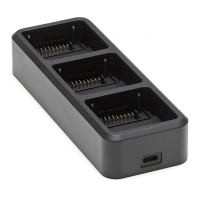
